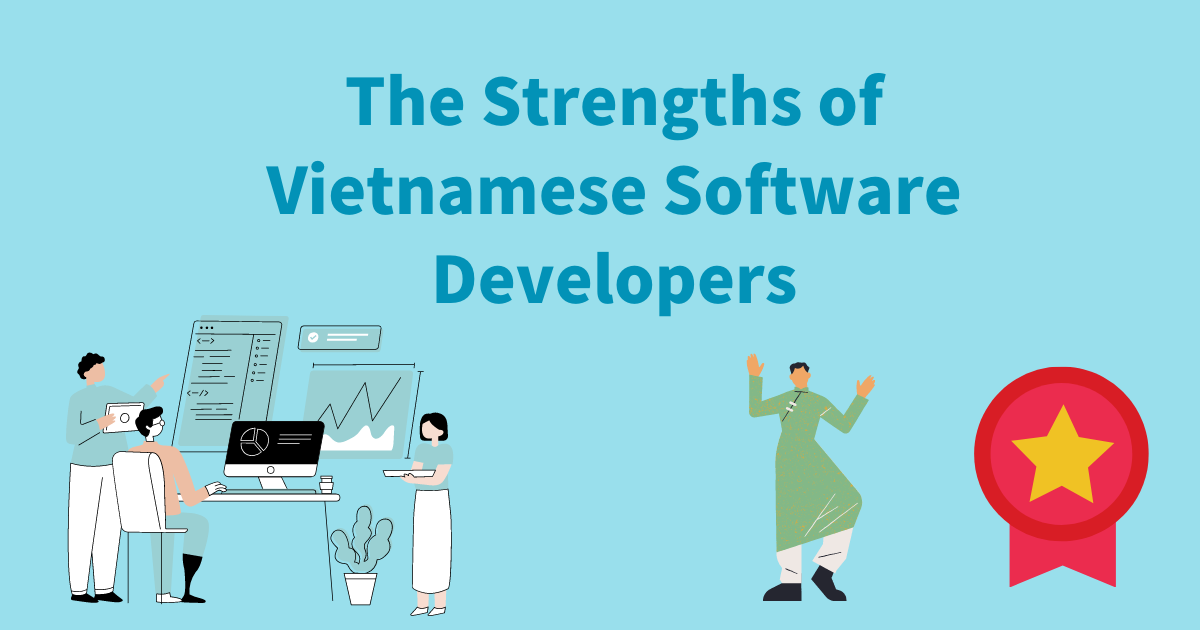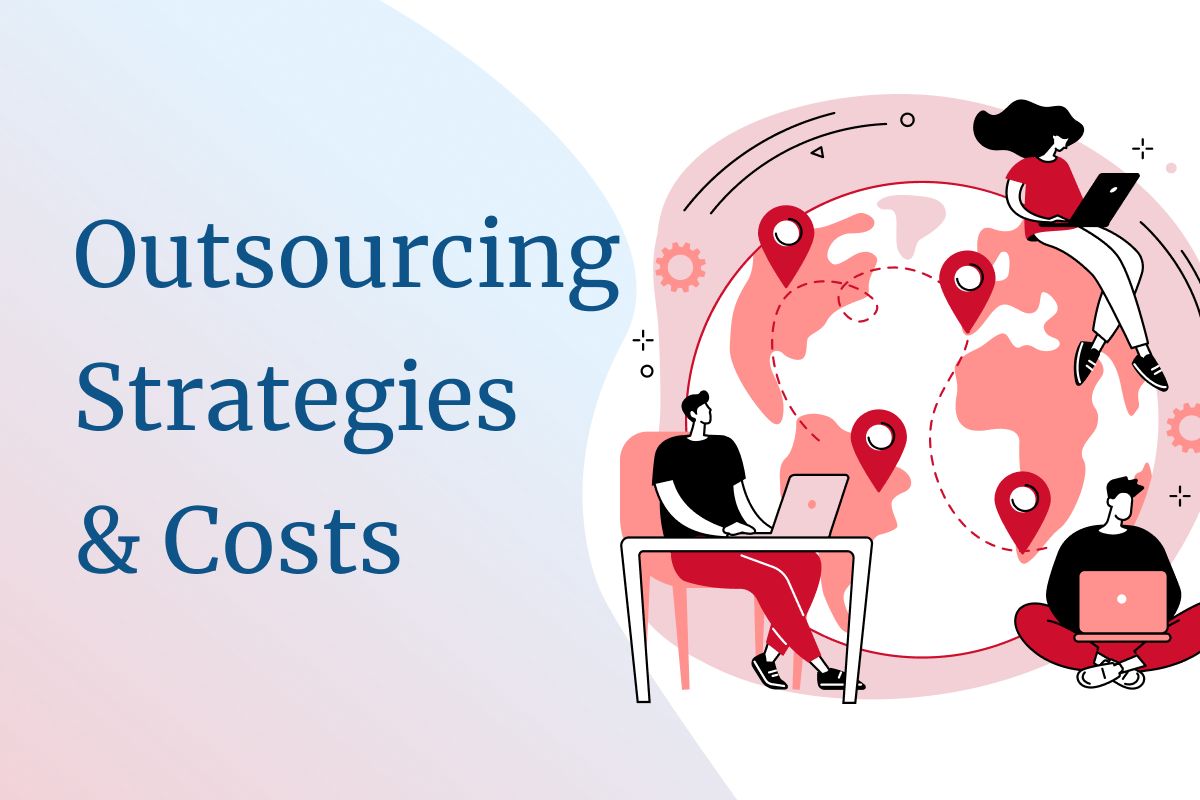Vietnam’s tech sector is not just growing; it’s exploding. With a thriving tech ecosystem, competitive costs, and a talent pool of highly skilled QA professionals, the country attracts companies worldwide seeking reliable quality assurance partnerships. With a compound annual growth rate (CAGR) of over 9% and a population comprising more than 70% of individuals under the age of 35, the country is a hub for young, talented, and driven software engineers. The government’s “National Digital Transformation Program by 2025” further fuels this fire, aiming to make Vietnam a leading digital economy in ASEAN.
For global businesses, this translates into an unparalleled opportunity to partner with a software testing provider in Vietnam that offers both exceptional talent and significant cost advantages, often 30-50% lower than equivalent services in North America or Western Europe. However, the true value lies deeper. The right QA partner is a strategic asset, directly impacting your product’s time-to-market, user satisfaction, and overall brand integrity. This guide provides a five-step framework to ensure you select a partner that delivers on this promise.
The 5-Step Evaluation Framework for Your Next QA Partner
1. Scrutinize Technical Proficiency & Tooling
The foundation of effective QA is technical mastery. Before engaging with a software testing provider, it is essential to understand their depth of expertise across key testing disciplines.
Automation testing: Ask detailed questions about their automation capabilities. Which frameworks do they work with? Can they handle web, mobile, API, and desktop applications? Do they have experience with your technology stack? Ask for their Test Automation Maturity Level. A mature provider will have a strategy for creating scalable, maintainable frameworks, not just writing scripts.
According to a State of Test Automation Survey 2024, 64% of QA teams use Selenium, making it the global standard. A competent provider should be proficient in it, as well as in modern frameworks such as Cypress for web applications or Appium for mobile applications. Ask about their success in reducing regression testing time; mature teams often achieve regression cycles that are 60-80% faster through automation. Look for proven expertise beyond just name-dropping tools.
Performance & Load Testing: In an era where a 1-second delay in page load can lead to a 7% reduction in conversions (Akamai), performance testing is critical. Does the provider offer load testing, stress testing, and scalability assessment? Can they use tools like JMeter, LoadRunner, or Gatling? Understanding their approach to identifying bottlenecks and providing optimization recommendations is crucial.
Security Testing: With the average cost of a data breach reaching $4.45 million globally (IBM, 2023), security can no longer be an afterthought.
Do they follow OWASP guidelines? Are they familiar with compliance requirements like PCI-DSS, HIPAA, or GDPR? Ensure the team is familiar with the OWASP Top 10, the industry-standard awareness document for web application security. They should be able to conduct systematic vulnerability assessments, rather than relying solely on automated scanners.
Test Data Management: How do they handle sensitive data in testing environments? Do they have robust data masking and synthetic data generation strategies in place? This is especially important if you work in a regulated industry.
Request case studies or technical documentation that demonstrates their proficiency. Ask for references from similar projects and don’t hesitate to conduct technical interviews with their team leads.
Why SHIFT ASIA Delivers: Our teams are certified in leading tools and frameworks. We build robust automation pipelines that integrate directly into your CI/CD, demonstrably accelerating release velocity.
2. Evaluate Process & Communication
Seamless integration is what separates a true partner from a distant vendor. Technical excellence means little without seamless integration into your existing workflows. Your software testing provider should feel like an integral part of your organization, not a disconnected vendor. Miscommunication and process gaps are the primary reasons for outsourcing failure.
Methodology Integration: Modern development demands testing that keeps pace with rapid iterations. Does the provider have proven Agile methodologies? Can they participate in sprint planning, daily standups, and retrospectives? Understanding their experience with continuous integration and continuous deployment (CI/CD) pipelines is essential.
A study by the Project Management Institute (PMI) found that 71% of organizations that value high communication effectiveness meet their project goals.
Reporting & Transparency: How frequently do you receive updates? What does their reporting structure look like? Real-time dashboards, daily standups, and weekly detailed reports should be standard. Transparency builds trust and ensures you’re never caught off guard by issues.
Communication Tools Integration: The provider should integrate effortlessly with your tech stack. Can they work through your preferred channels, such as Slack, Microsoft Teams, or Discord? Do they have experience with your project management tools like Jira, Azure DevOps, or Linear? Seamless tool integration reduces friction and keeps information flowing.
A Harvard Business Review analysis highlights that teams with clear communication protocols are 25% more productive. You should expect a clear plan that details the update frequency and escalation paths.
Time Zone & Availability: While Vietnam-based providers offer cost advantages, clarify their working hours to ensure they align with your team’s schedule. Do they offer dedicated time blocks for your timezone? How do they handle urgent issues outside standard hours?
Escalation Processes: Understand their escalation paths for critical issues. Who do you contact when problems arise? What’s their response time for different severity levels?
Why SHIFT ASIA Delivers: We assign a dedicated, fluent-English Project Manager as your single point of contact. Our teams are trained in Agile methodologies and work in your time zone, using your preferred communication platforms (E.g., Slack, Teams) to ensure seamless integration as an in-house team. Our defect reporting is clear, concise, and includes steps to reproduce the issue, as well as visual evidence, to enhance developer efficiency and effectiveness.
3. Assess Domain Experience & Cultural Fit
A provider who understands your industry can anticipate user behavior and identify edge cases that generic testers might miss.
Industry-Specific Knowledge: A provider experienced in fintech testing approaches risk differently than one in e-commerce. Ask about their portfolio in your sector. Do they understand regulatory requirements? Have they handled similar technical challenges? Domain expertise accelerates onboarding and enables more intelligent testing strategies.
For example, testing a FinTech app requires knowledge of payment gateways, compliance (PCI DSS), and low-latency performance. An E-commerce tester must understand the user journey from browse to checkout and the critical importance of coupon, inventory, and tax calculation logic.
User Experience Understanding: Beyond Functionality, Do They Grasp Your Product’s User Experience? A provider who understands conversion funnels, user journeys, and product analytics can test more strategically. They’ll catch issues that not only break functionality but also harm user engagement.
Cultural & Communication Fit: Beyond processes, assess whether the team feels like a natural fit. Do they ask thoughtful questions? Do they demonstrate genuine interest in your product’s success? Clear communication, proactive problem-solving, and a collaborative mindset matter tremendously in long-term partnerships.
Scalability & Growth Partnership: As your business grows, does your QA partner grow with you? Can they scale from a small dedicated team to a larger operation? Do they have the infrastructure and bench strength to handle increased demand?
Interview multiple team members, not just sales representatives. Request to speak with QA leads, test engineers, and project managers who would work directly with your team.
Why SHIFT ASIA Delivers: We have dedicated testing pods with experience in sectors like FinTech, Healthcare, eCommerce, and SaaS. We invest in domain-specific training for our engineers. Culturally, our professionals are recognized for their strong work ethic, proactivity, and problem-solving mindset, which fosters lasting partnerships.
4. Verify Security & Data Protection
Entrusting your code and data to a third party is a significant act of faith. Their security posture must be impeccable. Outsourcing software testing means entrusting your provider with access to your codebase, test environments, and potentially sensitive customer data. Security isn’t optional; it’s foundational.
Information Security Certifications: What security certifications does the provider hold? ISO 27001, SOC 2, or equivalent certifications demonstrate a commitment to information security. Don’t accept vague assurances; request proof.
ISO 27001 is the gold standard for information security management. It provides independent verification that a company follows international best practices. Compliance with the GDPR is mandatory if you handle data of EU citizens.
Data Protection Protocols: How do they protect your source code and intellectual property? What encryption standards do they use? Are your data and assets segregated from other clients? Understand their data retention and deletion policies.
Access Controls & Authentication: Do they implement role-based access controls? Is multi-factor authentication enforced? How do they manage credentials and API keys? A robust provider implements the principle of least privilege, ensuring that employees access only what they need.
Compliance & Regulatory Requirements: If you operate in regulated industries, verify their compliance with relevant standards. GDPR, HIPAA, CCPA, and PCI-DSS compliance should be demonstrable, not promised.
Incident Response: What’s their incident response plan? How do they handle data breaches? Are they transparent about their reporting and remediation processes? Understand their SLAs for security incident response.
Regular Audits & Assessments: Do they conduct regular security audits? Can they provide third-party security assessments? Ongoing security evaluation is a sign of a mature provider.
Why SHIFT ASIA Delivers: We operate on a foundation of security. Our commitment to ISO 27001 compliance, stringent internal data handling policies, and mandatory security training for all employees ensures that your intellectual property is protected with the highest level of professional diligence.
5. Understand Pricing Models & Flexibility
Transparency in pricing fosters trust and enables accurate budgeting. Software testing providers offer different engagement models. Understanding your options ensures you select the pricing structure that aligns with your business needs and cash flow.
Time & Materials (T&M) Model: You pay for hours worked. This model offers flexibility and is ideal when the project scope is unclear or requirements evolve frequently. The downside is the unpredictability of costs and the potential lack of accountability for efficiency. Best for: exploratory testing, emerging projects, and highly variable workloads.
Fixed Price Model: You agree on a scope and price upfront. This provides budget certainty and clear accountability. However, scope creep can become contentious, and the provider may be incentivized to cut corners. Best for: well-defined projects with stable requirements and clear deliverables.
Dedicated Team Model: You engage a dedicated team that operates as an extension of your organization. This offers the most flexibility and deepest integration. The team becomes intimately familiar with your product and workflows. Costs are predictable, and scaling is straightforward. Best suited for: long-term partnerships, startups requiring sustained QA investment, and mature products that require continuous testing.
Hybrid Models: Many providers offer combinations, such as a core dedicated team with additional temporary and/or managed resources for peak periods.
Evaluate Total Cost of Ownership: Don’t Optimize for Hourly Rate Alone. Consider the hidden costs: onboarding time, context-switching overhead, communication friction, and rework due to quality issues. A slightly more expensive provider with better processes often delivers a lower total cost of ownership.
Scalability & Price Transparency: How does pricing scale as your needs grow? Are there volume discounts? Do they provide transparent cost breakdowns, or do they hide services in opaque bundles? Avoid providers who lack pricing clarity.
Why SHIFT ASIA Delivers: We offer transparent and flexible engagement models. We will analyze your project’s scope, timeline, and goals to recommend the most efficient and cost-effective structure, ensuring you only pay for the value you need.
Choosing a Software Testing Provider: The Holistic View
Selecting a software testing provider in Vietnam requires balancing multiple dimensions. A provider that excels technically but offers poor communication creates friction. One with excellent cultural fit but weak security practices exposes your business to risk. A low-cost partner with limited scalability can become expensive as your needs grow.
The best software testing providers excel across all five dimensions. They combine technical prowess with in-depth domain knowledge, integrate seamlessly into your workflows, rigorously protect your assets, and offer flexible pricing that scales with your business.
As Vietnam’s QA market continues to mature, providers that differentiate themselves do so through more than cost advantages. They deliver through technical excellence, cultural compatibility, security rigor, and a genuine partnership mindset.
When evaluating potential partners, remember this: the right software testing provider isn’t just an outsourced function; they’re a strategic extension of your product and engineering teams, invested in your success and equipped to help you deliver software that delights users and drives business growth.
Take your time with the selection process. The right choice compounds returns across months and years of partnership.
Ready to partner with a provider that checks every box? Contact SHIFT ASIA today for a confidential consultation and a tailored QA strategy for your project.
ContactContact
Stay in touch with Us




